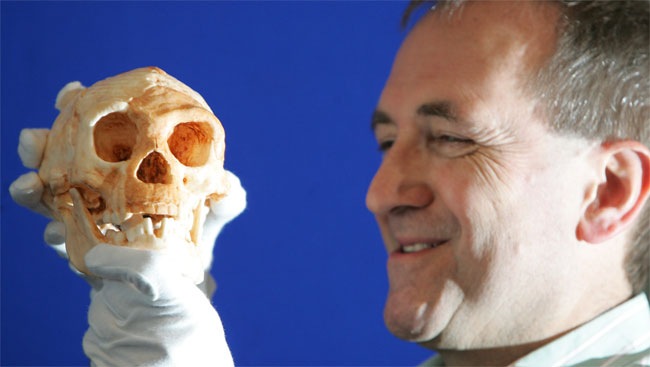Claim of 'Hobbit' Species Discounted

Skeletal remains said to be that of a new "hobbit" species in 2004 do not represent a new species as then claimed, but some of the ancestors of modern human pygmies who live on the island today, according to an international scientific team.
The remains were found in a cave on the island of Flores, Indonesia. They show signs of microcephaly, a condition in which the head and brain are much smaller than average for the person's age and gender.
"Our work documents the real dimensions of human variation here," says Dr. Robert B. Eckhardt, professor of developmental genetics and evolutionary morphology, department of kinesiology, Penn State. He notes that "LB1
The skeleton, dubbed LB1, "looks different if researchers think in terms of European characteristics because it samples a population that is not European, but Australomelanesian, and further because it is a developmentally abnormal individual, being microcephalic," said Robert Eckhardt, professor of developmental genetics and evolutionary morphology at Penn State.
The new analysis, done by several researchers, demonstrates that claims of a new species—"Homo floresiensis" and commonly called hobbits—are incorrect.
The results are published today in the online edition of the Proceedings of the National Academy of Sciences.
Those proposing a separate species had claimed that early human ancestors, Homo erectus, traveled to the island about 840,000 years ago and evolved into "Homo floresiensis," based on the discovery of stone tools on the island. This claim assumed that there was no subsequent human migration to the island until after "Homo floresiensis" died out about 15,000 years ago. Jacob and colleagues contend this is false since pygmy elephants (Stegodon) arrived on the island at least two separate times, and during periods of low sea levels Flores was isolated from other islands by only a few miles Repeated influxes by later humans were not only possible, but likely, they argue.
Sign up for the Live Science daily newsletter now
Get the world’s most fascinating discoveries delivered straight to your inbox.
For LB1'S cranium, face, dentition, skeleton, they find that many of the key features previously said to be diagnostic of a new species still are present in the Rampasasa pygmies on the island today, along with evidence for growth abnormalities.
"To establish a new species, paleoanthropologists are required to document a unique complex of normal traits not found in any other species," Eckhardt said in a statement today. "But this was not done. The normal traits of LB1 were not unique, and its unusually small braincase was not normal."
Previous articles (note that they are no longer considered accurate in light of the new findings):











